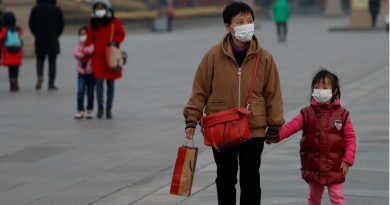Packaged Fruits and Vegetables: Safer to buy?
By Jill Waldbieser
There’s this weird thing happening in supermarkets where the checkouts are eliminating plastic bags, but their produce sections are overflowing with disposable clamshell cases, Styrofoam trays, and cellophane. What gives? Bagged salad is one thing, but do you really need individually wrapped cucumbers and mesh safety nets for every pear?
Caroline West Passerrello, RD, used to work as a grocery store dietitian. Now she’s a spokesperson for the Academy of Nutrition and Dietetics. She can explain.
Pre-cut produce is more expensive—and it offers less nutrition for your buck.
True, diced butternut squash, pineapple rings, and spiralized beets do save you prep time in the kitchen. But know that it comes at a nutritional cost.
“Cutting fruits or vegetables exposes them to oxygen and light, and sometimes heat, all of which affect vitamin retention in food,” says West Passerrello. Whole fruits and vegetables retain their vitamins and other nutrients longer than those that have been sliced and diced.
Water soluble vitamins, like B and C, are most at risk because water will evaporate faster from cut produce. It’s always a better idea to chop on demand and store any leftover produce in an air-tight container.
Buying bagged greens isn’t likely any safer for you.
It’s no coincidence that many food contamination scares come from pre-cut bagged lettuces. Torn leaves are more likely to contain bacteria because there are more edges to contaminate, says West Passarello. Plus, a warm, moist, and sealed environment is a perfect incubator for e. coli, salmonella, and listeria.
So buy whole-leaf greens like spinach or arugula, or shred lettuce yourself right before eating. Better yet, cut only as much as you need and store the rest in a plastic bag in the crisper. Note: All the washing in the world won’t rid you of e.coli. Only heat can do that.
Organic foods must be packaged.
To maintain organic certification from both the manufacturer and retailer, organic items cannot touch conventional ones, which is why they’re often packaged. See supermarket food sold as organic that isn’t in a package? It might be mislabeled. One exception: organic fruit sold aft farmers’ markets direct to consumers don’t require packaging.
Thin-skinned produce benefits from a flak-jacket.
You can buy a pear without that Styrofoam fishnet, but a nude pear is more prone to bruising. That means it may have suffered some bumps during transportation or in the trunk of your car on the way home—both which may lead to those not-so-appetizing blackened squishy parts.
And ditto those cucumbers wrapped in plastic. Those thinner-skinned cukes, known as English cucumbers, are also known to bruise in transit.
All this said, even if a food is packaged you should still wash your produce, ideally before eating. Moisture contributes to spoilage, so washing produce will make it go bad sooner, meal prep be damned.
All that fancy tomato packaging doesn’t matter much.
Dimpled plastic safeguards, cardboard reinforced sleeves, elaborate netted bags—there’s a host of advanced packaging options for everyone’s favorite fruit (yes, fruit).
While the packaging may prevent an occasional smushed ‘mater, West Passarello says it won’t affect the flavor of the actual product.
Her best tip: When you bring your tomatoes home, store them on the counter with the stem nub facing up. The end with the stem (also called the “crown”) is more delicate. Store the tomato with the crown down, and the weight of the rest of the tomato will soften the fruit—and not in a good way.
Apples can have a commercial shelf life of about a year.
Credit their thick skins and dense interior. But one bad apple really can spoil the whole cart. That’s because they give off ethylene gas, which has the effect of ripening the fruit around them. It’s why you often see them stocked in bags of five or six—to prevent the entire shipment from spoiling.
Ultimately, packaging helps extend produce’s shelf life.
Produce spoils for the same reason any other food turns stale or goes bad: oxidation. Food scientists figured out that by adjusting the ratio of oxygen to carbon dioxide inside a bag of lettuce, for instance, that it will keep it fresh longer. Fear not. They do this naturally, using the gases the plants themselves give off when they’re cut. It’s called “modified atmosphere packaging,” if you want to impress your friends and loved ones with the term.
Article first published on Menshealth.com.



